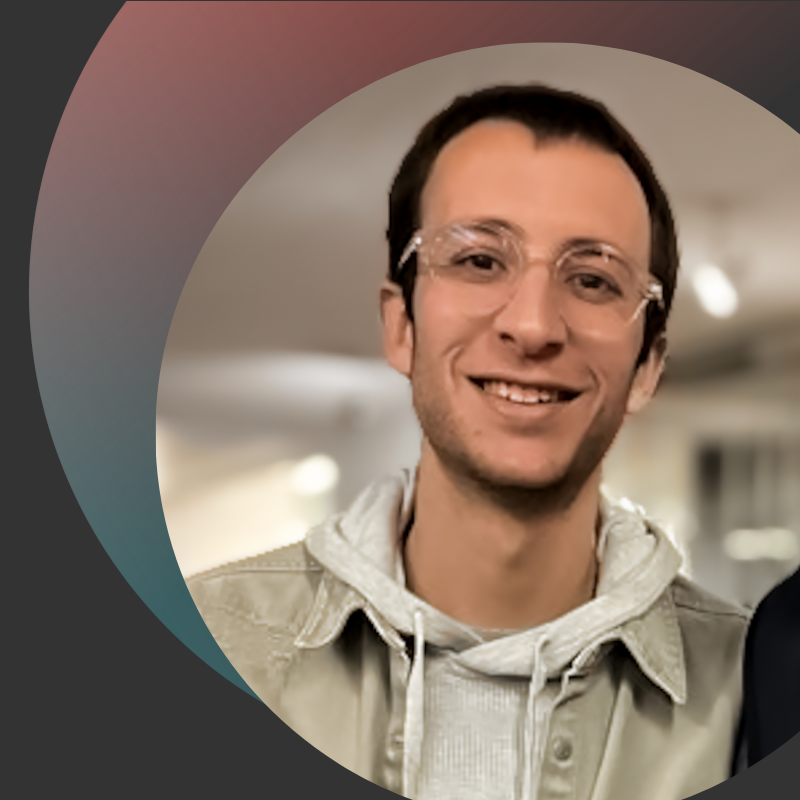In this episode of People Fundamentals, I’m joined by Armando Smeke, strategy director at Posadas, the largest hotel company in Mexico and Latin America.
This insightful conversation, recorded live at UNLEASH America 2024 in Las Vegas, unpacks Posadas’ implementation of OKRs (Objectives and Key Results) and their transformative impact on aligning organizational goals, enhancing productivity, and fostering employee growth.
Tune in to hear from Armando on what he learned from that experience.
Subscribe wherever you listen to podcasts: Apple Podcasts | Spotify | YouTube Music
Start with shared priorities
When Armando joined Posadas eight years ago, he recalls, the company had good intentions and great ideas, but everyone was working in silos. There was a lack of alignment, and despite the hard work, the company wasn’t achieving its desired results. Armando knew that to drive real change, they needed to think about goals from a holistic, company-wide perspective rather than focusing on individual departments.
That meant taking a wider view of company priorities, rather than each department focusing only on its own objectives. This broader perspective helps avoid the narrow view where each department thinks its goals are the most important. “Think about the goals — not in terms of your department, of your area of control,” Armando says. “Instead think about goals in terms of the whole company.”
To bring this vision to life, Armando and his team started by securing alignment and buy-in from the leadership team and the CEO. They established a clear purpose for the organization: to create a better world so people can travel. From there, Armando and his team translated the broader purpose into specific business and financial objectives.
Invest in transparency and collaboration
Initially, Posadas tracked their OKRs using Excel files, which quickly became cumbersome. Realizing the need for better technology, they adopted Betterworks, which increased their capacity to implement OKRs across the company and provided full transparency into what everyone was working on.
This transparency helped build trust within the organization. For example, during the pandemic, employees would check Armando’s OKRs to see if there were any downsizing projects, which reassured them about their job security.
The transparency provided by OKRs also helped prevent strategic misalignments — and encouraged a collaborative work environment. “You want them to collaborate and to understand, ‘Hey, this team is working on this and working on a similar thing. Maybe we can collaborate. Let me understand your OKRs because they are aligned to mine.’ And for me, that’s very important,” Armando says.
Integrate conversations about goals into the flow of work
Armando and his team have integrated conversations about OKRs into the full employee experience. They’re used in performance reviews, one-on-one meetings, and to identify top talent within the company.
Incorporating OKRs across all employee conversations gives Posadas’ HR leaders and managers data they can use to drive strategic programs, like workforce development and succession planning. Posadas’ OKR program makes it easy to see what everyone is working on, so Armando and his team can identify who’s contributing to the most crucial parts of the company’s strategy and goals.
This system not only helps them recognize top performers but also understand how each person’s efforts align with the company’s objectives, enabling Armando and his team to put top performers in positions where they can make the biggest impact. “It helps us to identify our top talent, or core talent, within the company,” Armando says.
This approach ensures that employees are engaged, their development needs are considered, and their efforts are aligned with the company’s strategic goals.
As we find out in this episode, Armando Smeke’s strategic approach at Posadas has transformed how the company aligns its workforce with its overarching goals. Posadas has created a culture of transparency, collaboration, and continuous improvement, which has boosted productivity and improved employee engagement and satisfaction.
Armando’s insights demonstrate the power of thinking holistically about company goals and investing in the right tools and processes to support them. From establishing a clear company purpose to leveraging technology for better transparency and integrating OKRs into daily experiences, Posadas has set a stellar example of how organizations can achieve strategic alignment and drive meaningful business outcomes.
People in This Episode
Armando Smeke: LinkedIn
Transcript
Armando Smeke:
I think that something that helped us a lot was our CEO sponsorship. He was very clear with the main goal for the company. That was very helpful. And also trying to think about the goals, not in terms of your department, of your area of control. Instead, thinking about goals in terms of the whole company.
If you try to narrow the objectives to the whole company, not just thinking about your department, it’s easier because using human nature to try to show that you’re very important and you have a lot of important things and the only goals that are important are your goals. But if you have this kind of effort and socialize with the leadership team and all of that, I think it’s a good idea.
Ashley Litzenberger:
Hi everyone and welcome to Betterworks podcast, People Fundamentals. I’m your host, Ashley Litzenberger, senior director of product marketing. Betterworks’ core belief in People Fundamentals revolves around helping HR lead through constant change by focusing on core values like fairness, support, balance, and enabling growth opportunities for employees. These tenets empower everyone in the workforce to strive for excellence, to foster creativity, and to acknowledge each other’s contributions.
Betterworks believes that strategic HR leaders can translate these principles into action, shaping their workforce for the better and helping drive meaningful business outcomes. In this show, we’re diving even deeper into these principles as we hear from experts about how you can make them come alive in your organization. In this episode, recorded live at UNLEASH America 2024 in Las Vegas, we’re delving into the realm of enhancing workforce productivity with our special guest Armando Smeke. Armando is the head of strategic planning at Posadas.
Posadas, a customer of Betterworks, is the largest hotel company in Mexico and Latin America. He shares insights on the implementation of OKRs and how aligning these with the company’s purpose has revolutionized their operational goals. Armando explores the challenges and strategies behind effective workforce alignment and productivity. He breaks down the steps Posadas has taken to foster a culture of clear objectives and efficient talent utilization. From establishing a clear purpose that resonates across the organization to implementing cutting-edge software for managing OKRs.
Armando provides a comprehensive look at driving productivity and strategic alignment, but it’s not just about structure. Armando shares insights into how Posadas ensures its employees are engaged and how they balance productivity with employee satisfaction and work-life balance. Through his stories, he reveals how strategic HR practices can significantly enhance business outcomes and the employee experience. So tune in and get ready to learn how you can enhance your organization’s productivity and align your workforce towards common goals.
Hello, Armando. Thank you so much for joining us.
Armando Smeke:
Sure, and thank you for the invitation.
Ashley Litzenberger:
Let’s start at a very high level. We talk a lot about how important it is for companies and for HR teams to help drive or improve productivity. I want to take a step back and ask you, when you think about workforce productivity, what does that mean?
Armando Smeke:
For me, that means that everybody understand why they are at the job, what they need to accomplish, and how they can make it in a better way possible for everybody so they can have a work-life balance. So our resources are allocated in the most efficient way, not in terms of only money, but also in terms of talent. For me, that’s the workforce efficiency.
Ashley Litzenberger:
That’s really powerful and very simplified. One of the questions that I think a lot about is how do you measure workforce productivity?
Armando Smeke:
It’s a difficult question because I understand some companies try to measure it in terms of hours or the headcount or how much time you spend doing specific task. Well, for me it’s how we can accomplish the results that we want using the talent of everybody in the best of their capacities. So they are all in the same team, and of course we need to take care of the expenses and the headcount and all of that, but for me it’s that people spend all of their time aligned to our objectives and contributing to what we want to accomplish as a business.
For me, that’s how we measure productivity. If we are getting to the results we are looking for, if we, each quarter, get to the results that we decide we want to get, that’s the best measure. And then we can measure that with the time that they spend in specific task and all of that.
Ashley Litzenberger:
Or layer in how employee engagement and satisfaction, how happy are they in the work that they are doing as well. But I want to double-click on what you just said, which is workforce productivity is really based on workforce alignment and that is understanding what are the goals of my organization? What are the goals of my team organization? How was your organization doing that when you first started? And what have you been doing to help create more clarity around alignment?
Armando Smeke:
I remember when I started eight years ago, everybody had very good intentions. Everybody had great ideas, but everybody was working by himself. A very fussy thinking, fussy execution. If you have a meeting with a lot of people, you can ask them, “Hey, did you accomplish your objectives?” And everybody said, “Yeah.” And when you go and see the results from the company, we weren’t getting the one we want to get. So it wasn’t because people weren’t working, they were working very hard, but they don’t know where to work and how to work.
Ashley Litzenberger:
They didn’t know what they were working towards.
Armando Smeke:
Exactly.
Ashley Litzenberger:
So what changes did you all implement to go from this place of everyone working really hard and trying their hardest and really putting in the effort to actually making sure that effort was moving towards an aligned goal?
Armando Smeke:
The first one is to find a purpose as a company, I’m very proud about our purpose. That is to create a better world so people can travel. That’s our purpose. And if you start from that and then take it to your business plan and with your financial objectives and client objectives and all of that, it’s easier. But then you need to execute that and communicate to everybody in the organization. We are around 15,000 employees across Mexico in different type of jobs. So the communication that we need to provide to them is very important.
And we established OKRs as our methodology to align the company to prioritize the initiatives for each quarter. And it’s like a constant effort when you have to be working. But I think that we have been very successful for now.
Ashley Litzenberger:
I’m curious because implementing OKRs or revitalizing OKRs if they’ve gone by the wayside or haven’t been effective is… Well, I’ll just call it a tremendous lift and an enormous amount of effort. How did you go about implementing OKRs? Where did you start? And what are the steps that you actually took? Break it down in case and say that you’re talking to someone who’s trying to put in OKRs into their organization for the first time.
Armando Smeke:
At the beginning, we need to align to the leadership team. It all starts with them. If they are not into the process, the process will die very soon. So we work very close to the leadership team with our CEO, that is one of our main sponsors for the OKRs methodology. And we start with very easy top company OKRs only with around 20 people in the organization working each quarter.
After that, we take the OKRs to the next level of managers. So everybody in the company who is in charge of people to have their OKRs and with very strong communication efforts, training very important. But at that time we use Excel files.
Ashley Litzenberger:
Oh my goodness. So wait, I just want to summarize what you were saying you were doing. So you started with the leadership team, got buy-in for them about the OKR project and got them to define what the company purpose was and maybe the top two to three strategic goals that they wanted to do.
Armando Smeke:
No more than five.
Ashley Litzenberger:
No more than five. What did you do to help keep your leadership team focused on five? Because I’ve worked with leadership teams who very quickly are like, “Well, I know five is the maximum, but it’s really these eight that are so important.” How did you work with the team who are all focused on different things to narrow it down to five?
Armando Smeke:
I think something that helped us a lot was our CEO sponsorship. He was very clear with the main goal for the company. That was very helpful. And also trying to think about the goals, not in terms of your department, of your area of control. Instead, thinking about goals in terms of the whole company. If you try to narrow the objectives to the whole company, not just thinking about your department, it’s easier because it’s in human nature to try to show that you’re very important and you have a lot of important things and the only goals that are important are your goals.
But if you have this kind of effort and socialize with the leadership team and all of that, I think it’s a good idea. And also align those objectives to your financial results and also to what all our stakeholders are demanding from the leadership team that help us to align to only five.
Ashley Litzenberger:
That’s great. And I often find that when I’ve worked with organizations in the past implementing OKRs, when they’re looking at setting up those first five, what you said about aligning your strategic goals to your financial goals is really important. And so a couple of places that I’ve often seen recommended to organizations first putting OKRs into places to look at what are the financial levers that you want to accomplish? Are you looking to grow new business? Are you looking to retain customers? Are you looking to expand customer contracts?
Are you looking to launch a new product area or capture a new market? And based off of that information, using that to say what we want to do is we want to reduce churn amongst our customer base, which means that our goal might not be to reduce churn, it might be to create in a better customer experience. And we’ll know that that’s trackable and achievable through the key results of customer retention, and you’ll be able to actually create strategy around it. So I love what you said.
So the first step is create a company purpose with your leadership team, set those maximum of five core goal, then bring them out to your core leaders and then bring them out to your managers.
Armando Smeke:
Exactly. And the challenge that we faced at the time is that we were using Excel files to track our OKRs. That’s where we realized that we need a platform, the best in class technology, everybody’s engaged so you can have full transparency of what people are working on and all of that. And that’s when we got to know Betterworks. It increases our capacity to implement OKRs across the company.
That’s when we decide to move from only managers to the whole corporate with around 500 people there. For me, the definition of the OKRs, it’s the most important part of the process. You need to really think what you’re going to prioritize and where you want your focus on. For me, that’s very important, but also you need to scale the system.
Ashley Litzenberger:
So it really ultimately can’t just be something that your leadership team or your executives or your VPs are owning and seeing. It needs to be transparent.
Armando Smeke:
And they need to leave the process. It needs to be in a daily basis, activities for our teams, and you want them to collaborate and to understand, “Hey, this team is working on this. I’m working on a similar thing. Maybe we can collaborate and let me understand your OKRs because they are aligned to mine.” For me, that’s very important.
Ashley Litzenberger:
Or maybe equally important is we actually find out that one team’s OKRs run strategically against another team’s OKRs, and you’re realizing that you’re not actually working together, you’re working in opposite directions and you can work to fix that because it’s clear and transparent and it’s recorded and written down.
Armando Smeke:
Just like that. One funny story, when we were during the pandemic, people were very worried about us making a downsizing project in the company and they were reading my OKRs all the time to understand if we are going to fire somebody because it was my responsibility. And they were like, “Okay, we have transparency in the company. So if Armando doesn’t have any downsizing project in his OKRs, it’s because I feel safe.”
Ashley Litzenberger:
That’s really interesting. It becomes a level of trust building within your organization and a clear level of communication. I’m curious, we’ve talked about the importance of setting up OKRs, of making them transparent, cascading them through your entire company, which does often require a software, especially when you’re talking about thousands or tens of thousands of employees. That level of complexity just doesn’t function in an Excel sheet like you said.
But then you were also talking about dynamically managing and keeping them up to date. Tell me a little bit about how that has transformed the work that you do. What is it about dynamically tracking and updating OKRs that’s been valuable?
Armando Smeke:
Our process is very easy. We establish our quarterly OKRs with the executive committee and then we establish some monthly meetings. Everybody gets a chance to understand the OKRs from the top company and establish their own OKRs. That’s how we keep the wheel moving with some meetings, collaboration, trying to understand what people are working and it’s like a natural process right now. We have been doing this for six years now.
Ashley Litzenberger:
And six years later, how are you integrating goals and OKRs into other parts of the employee experience? How does it fold over? Does it have a role in performance management, in performance reviews, in skill building or skill development? How’s HR connecting that to some of the other processes that they’re doing?
Armando Smeke:
It’s part of our performance review. Of course, you get the chance to review all your OKRs and understand the performance of each one of your employees. We also get the chance to analyze our top talent through OKRs because as I mentioned, you have full transparency of what people are working on, and it’s very easy for us to understand the most important things for the strategy and for the company, who is working on that. So it helps us to identify our top talent or our core talent within the company. It’s also very helpful.
And now we are using it for our one-on-one meetings, we try to make it around OKRs, to have more productive meetings with our managers. So it’s part of the full employee experience. And before we were all working in the office, right now we are working all over the country, so it’s very easy for us to just establish our OKRs and feel free to work from home. Flexible work, as I mentioned before, work-life balance is very important. So if you have clarity of your objectives, it helps us to have more flexibility in the company.
Ashley Litzenberger:
That’s really powerful. I want to double-click on that a little bit because sometimes… I’ve seen it happen at a couple of American organizations that adopt OKRs and become highly focused on output. You can actually create a really strong culture of burnout because you’re trying to drive too hard towards volume or productivity outputs. So how do you balance your OKR process where you’re creating transparency and alignment and efficiency alongside work-life balance and burnout prevention or even learning and development.
So if someone’s growing into a new role and they don’t hit their specific OKR, but that’s because they’re in that learning curve part of their role, what do you do to make sure that there is that culture balance or that opening?
Armando Smeke:
For us, it’s very important the definition of OKRs. We try to take some time at the end or the beginning of each quarter to really think what are our priorities and to understand the moment in the life of each one of our employees. If I have someone in my team that’s learning the new job, he’s getting to know the team or something like that, we take that into consideration when we establish our OKRs. So it’s very important for us to have continuous conversations between leaders and his team to understand that.
And that help us to create more powerful OKRs because you take in consideration the moment of the business, but also the moment that the people or the person is leaving. And if you try to match both of them, I think that you are more effective in selecting your OKRs. And we don’t have anything related to compensation attached to our OKRs, so we try to push people to think out of the box and push harder knowing that there are no consequences in terms of money or in compensation if they fall short.
Ashley Litzenberger:
That’s really powerful. I’m curious, as workforces continue to transform, the new thing that a lot of folks are talking about is skills and developing the right skills and creating a skills-based workforce. Does your company capture skill information? And then if it does, how are you using it? And if it doesn’t, how would you use that to tie into OKRs?
Armando Smeke:
We really understand that each individual has his own talents and is good for something, and we try to create these diverse teams, taking into consideration the different talents or skills from the people to build more productive teams. And also in terms of hiring people think more about the skills and what they are bringing to the table more than your CV or your past story because it doesn’t predict what we are going to do in the future.
Ashley Litzenberger:
If you had that database of skills, you could create OKRs that are not just around who has the skills to execute against these OKRs, but what skills are we missing and can we start creating OKRs for our workforce to build those skills and to acquire them so then you can actually start to meet your future workforce needs.
Armando Smeke:
Absolutely. We are using that for… We have our development OKRs when we try to catch what skills we are missing and establish an OKR for achieving that in order to then have an OKR for the business. So it’s kind of tricky, but your development OKR to develop some skills, learning capabilities and all that, and then move that to business OKRs. So we use both for our teams.
Ashley Litzenberger:
That’s really powerful. Well, thank you so much. This has been a really wonderful conversation around what the power of OKRs are to align your workforce and promote greater productivity, and also to create a culture where folks are feeling like the work that they’re doing is actually effective and leading to results so that they can feel like they’re engaged and their work is actually meaningful to the organization and maybe even to the world because of the purpose of the organization. That’s clearly communicated.
Armando Smeke:
Of course, I think everybody wants to feel that they are doing a meaningful job, that they contribute to something bigger than this transparency and this kind of methodologies and technologies enable us.
Ashley Litzenberger:
If you were talking to someone who was thinking about purchasing BetterWorks, what would you say are the really big things that made it the right decision for your company to use the BetterWorks software?
Armando Smeke:
It’s very easy for me. Implementing the OKR system in your company, it’s very hard and you don’t want to be working with a very complex platform to understand new technology and BetterWorks helps you not only to have very easy implementation, but also enables your process. So you don’t want to bring this consultant on this platform that is going to take you some time to implement while you are implementing the OKR methodology at the same time, BetterWorks is very easy, the service is great.
People are always talking to us on what you need, how can we innovate what your company needs? And you can see the platform over the last six years, every year is better than the year before. And I don’t feel like I’m a BetterWorks client. I feel like I’m a partner of BetterWorks, and I see BetterWorks as my partners, not my service.
Ashley Litzenberger:
That’s really cool. Awesome. Well, thank you so much, Armando. Have a wonderful rest of your day.
Armando Smeke:
Thank you.
Ashley Litzenberger:
As we wrap up our exploration of enhancing workforce productivity and the strategic implementation of OKRs, let’s reflect on how we can effectively apply these insights in today’s challenging business environment. First, establish clear organizational purposes. As Armando discussed, having a clear compelling purpose at the core of your business strategy, not only aligns your workforce, but also drives engagement and productivity. Make sure this purpose resonates throughout your organization.
Second, implement and manage OKRs effectively. Start with leadership buy-in and share these objectives down through every managerial layer of your organization. This ensures that everyone is working towards the same goals, enhancing alignment and efficiency. Lastly, ensure transparency and continuous communication. As Armando highlighted, using tools like BetterWorks can help maintain visibility across all OKRs. Fostering a culture of accountability and collaboration. This transparency also helps align workforce efforts and avoid strategic missteps.
As we’ve learned from Posada’s experience, hold yourselves accountable for the routine implementation of these strategies. Together we can enhance productivity, align our teams more effectively, and drive significant business outcomes. And when faced with the challenges of managing a large workforce, choose to strive for clarity and alignment. Be sure to stay tuned for our next episode of the People Fundamentals podcast. Subscribe to us on Apple Podcasts, Spotify or YouTube Music.
And if you like what you hear, share us with your friends and colleagues. We’ll see you again soon.







